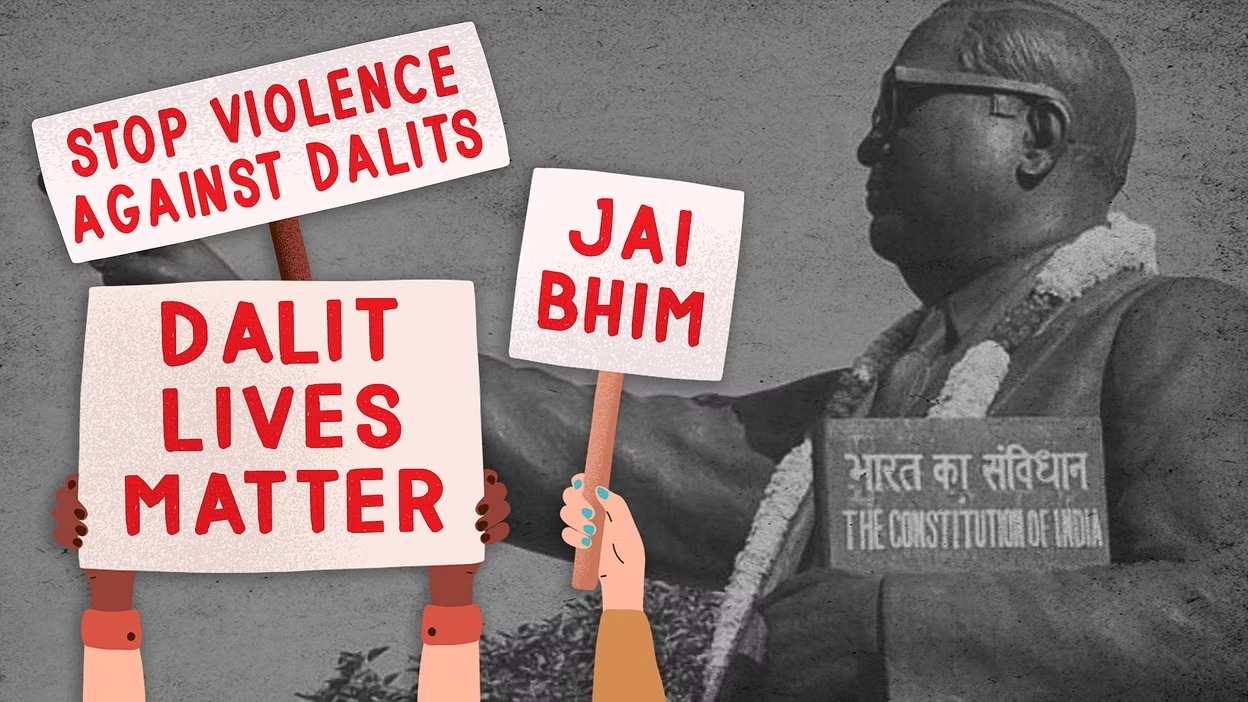Caste Violence
February 10, 2023
The recent data by the National Crime Records Bureau (NCRB) noted a significant jump in violence against the Scheduled Castes and Scheduled Tribes communities in India with six crimes being reported an hour against Dalits in 2021. The National Coalition for Strengthening SCs and STs (PoA) Act (NCSPA), a consortium of 500 Dalit and Adivasi civil societies, analysed the NCRB data of crimes against SCs and STs and found that the communities continued to suffer the worst form of violence and repression in India despite legal and constitutional safeguards. NCSPA found members of the community to be victims of institutional and social discrimination.
India’s caste system is perhaps the world’s longest surviving social hierarchy. A defining feature of Hinduism, caste encompasses a complex ordering of social groups on the basis of ritual purity. A person is considered a member of the caste into which he or she is born and remains within the caste until death, although the particular ranking of that caste may vary among regions over the time. A 1997 report issued by National commission for schedule caste and schedule Tribes underscored that “untouchability”—the imposition of social disability on a person by reason of their birth in certain castes was still practised in many forms throughout the country, the report describes a number of social manifestations of caste-based discrimination in the 1990s and also the violence and atrocities committed against these community. Nevertheless, the recent death of Rohith Vemula of Hyderabad university is an evident example for the existing caste-based violence in India.
Recent incidents
- A Dalit man was allegedly beaten up with iron rods and sticks by a group of men for drinking water from a pot meant for people from upper castes in Rajasthan’s Jaisalmer district (September 2022)
- A teacher was accused of killing a Dalit student over a spelling error on August 2022, triggering a violent protest in the Auriya district, Uttar Pradesh.
- A minor Dalit girl was allegedly gang-raped and set ablaze by two men in Uttar Pradesh’s Pilibhit district on September 7 2022. She later succumbed to her injuries.
- Six men were arrested in Uttar Pradesh’s Lakhimpur Kheri after two minor Dalit sisters were found hanging dead from a tree in a village. The six accused men were charged with rape and murder under relevant sections of the Indian Penal Code (IPC) and Protection of Children from Sexual Offences (POCSO).
REASONS BEHIND CASTE VIOLENCE
- Relative Deprivation– Dominant caste groups identify their social status by comparing themselves with downtrodden groups. When lower caste groups attain upward mobility, upper caste groups often feels relatively deprived leading to resentment and organised attacks.
- The Relevance of Land– According to 1991 census, most Dalit victims of abuses are landless agricultural labourers. Land being the prime asset in rural areas, lack of access to land makes Dalits economically vulnerable. Their dependency is exploited by the upper and middle-class landlords.
- Patriarchy: – Feminist scholars have pointed out that caste groups maintain their social status by exercising control over women’s sexuality and agency. So instances of inter caste marriages especially women marrying lower caste men are met with violence like honour killings.
- Social boycotts and retaliatory violence– The social distancing and untouchability practised against the lower caste has created a wave of violence amongst the downtrodden. E.g. The temple entry movement, #DalitLivesMatter campaign. Whenever Dalits have tried to organise themselves or assert the rights there has been a backlash from the feudal lords resulting in mass killings of dalits, gang rapes, looting, etc.
- Political needs– Political parties use caste as an identity to mobilise vote and instigate caste violence to further consolidate their vote banks.
- According to Throat caste conflict is a sub altern struggle for appropriate space in democratic India.
- Stevenson in his study found that Dalit community in south India fought against each other pertaining right over ritual symbol, putting turban on ritual occasions and so on.
- Oscar Louis in his study found that in Western UP Jats and Rajputs fought against each other in search of superiority and dominance.
- According to SC Dube, green revolution and resultant economic affluence of farmers in Western UP, Punjab and Haryana gave rise to consolidation of intermediary castes in North India. This consolidation of castes in their search for power led to caste conflicts in few states.
Thus, according to Andre Beteille, caste conflicts are moving from identity centric struggles to interest focused struggles.



